The 10 Best Stretches for Your Lower Body
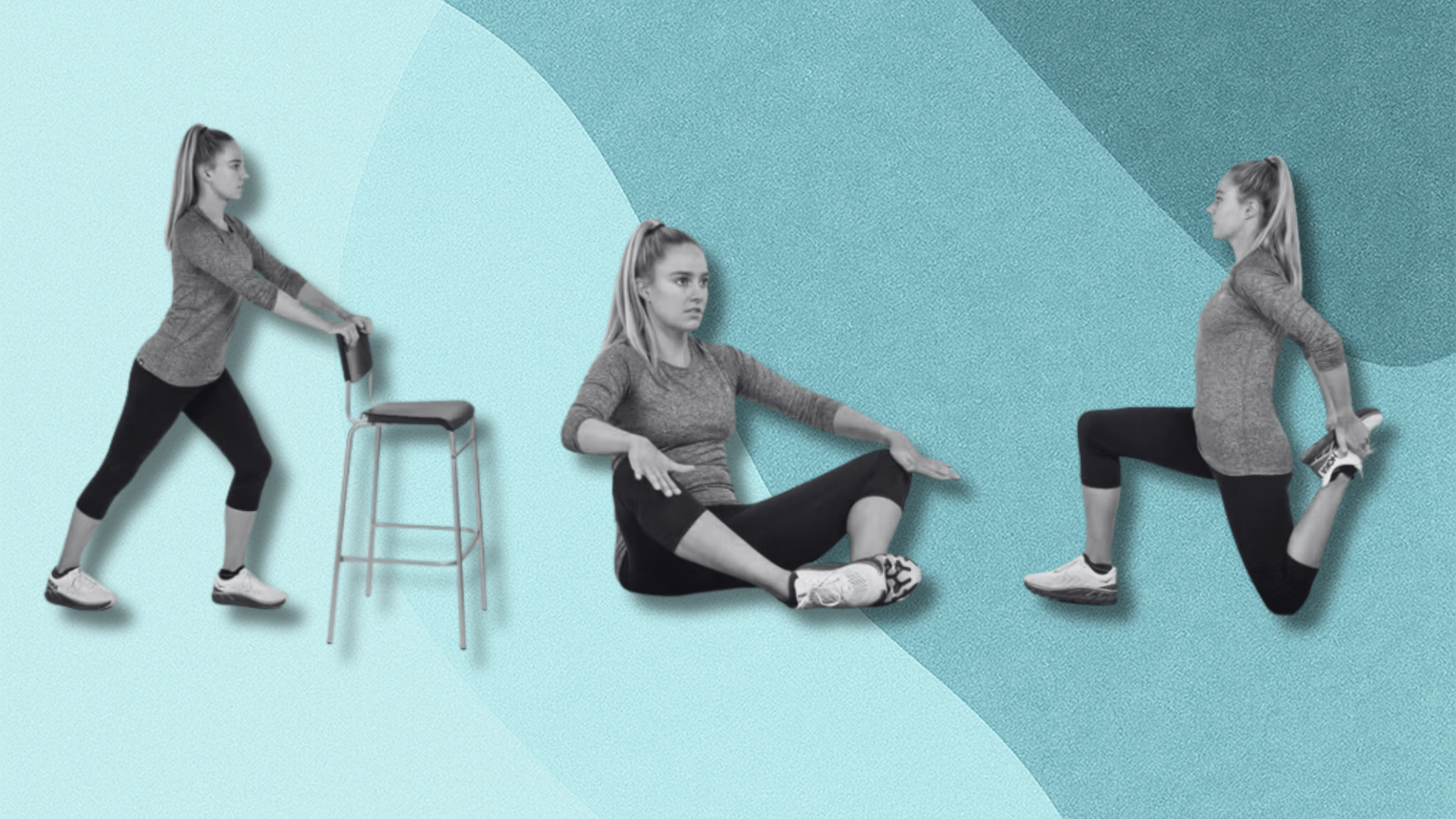
(Photo: Brad Kaminski; Design: Ayana Underwood/Canva)
It’s no secret that runners need mobility and flexibility, but when it comes to the best stretches for runners, there’s some debate about the best practices. How exactly should runners stretch? Is there a specific stretching routine to keep us healthy and ready for optimal performance?
Here’s what we know for a fact: regular stretching is the single most important thing you can do to keep your body limber, prevent stiffness, and limit injury. And it’s not a mystery—there is a right way to stretch, including the timing and technique.
This ten-stretch program for runners was developed by Gerard Hartmann, an injury therapist who has worked with over 70 Olympic medalists and world-record holders, including Paula Radcliffe and Khalid Khannouchi.
It’s a simple, step-by-step stretching routine that Hartmann advises all his athletes to incorporate into their training.
How to Perform This Lower Body Stretch Routine
Do the stretching routine in the order listed below. It typically takes between 10 and 15 minutes to complete.
These moves follow a natural progression from one muscle group to the next. You can do these before running, because these are active stretches. However, you can do them after running to regain tissue flexibility.
Hold each stretch for two to four seconds. Return to the start position and repeat each stretch eight to 12 times. Don’t force the stretch. Instead, gently encourage the lengthening of your muscles.
Follow the program daily to keep all the muscles you use while running limber, adding efficiency to your stride, and promoting your overall health.
FYI: Some of these moves require a resistance band or rope.
1. Single-Leg Pelvic Tilt Stretch
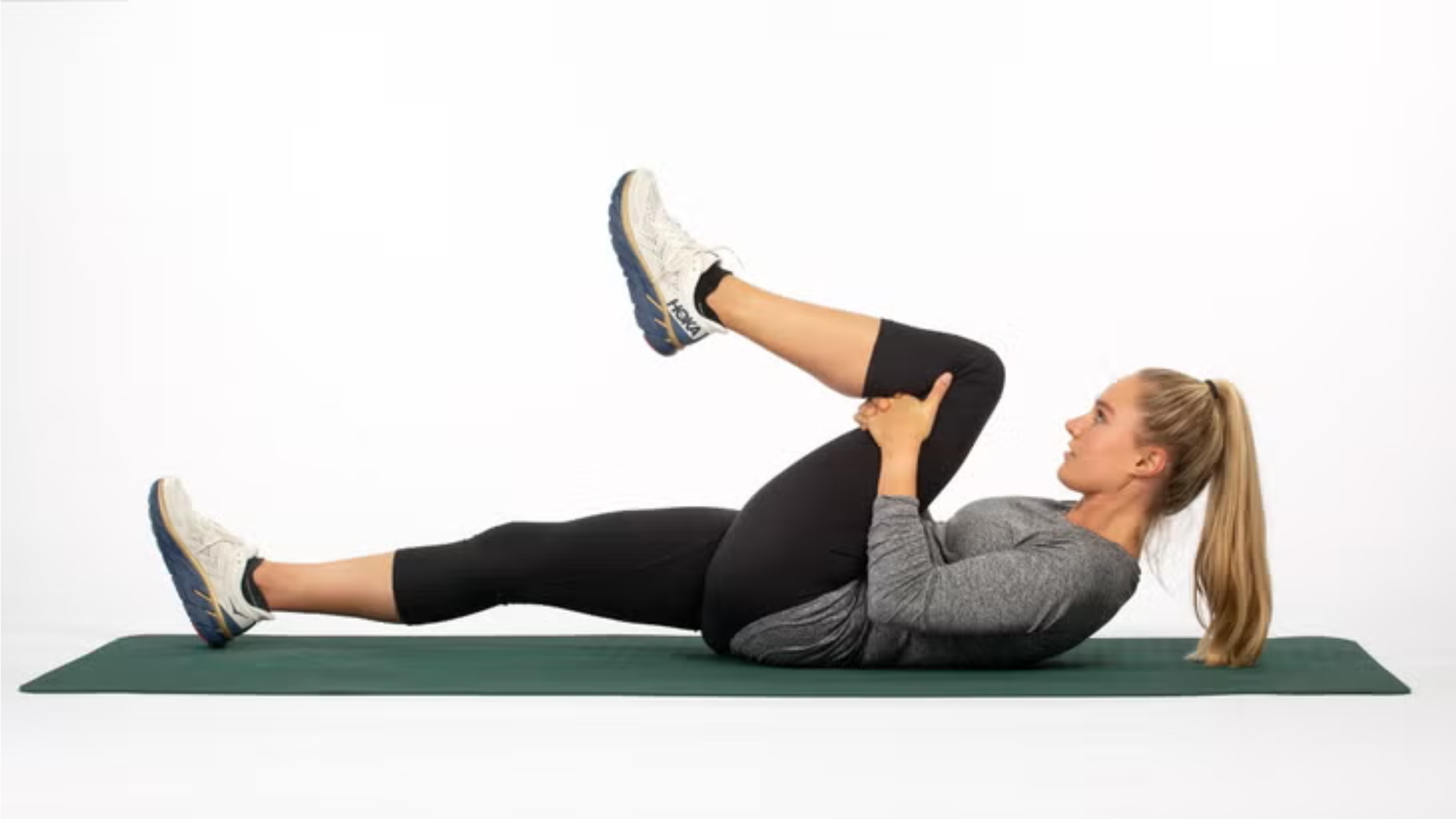
Muscles Stretched: Lower Back and Gluteus Maximus
How to Do It:
- Lie on your back with your legs straight.
- Pull the left knee toward the chest.
- Place your hands behind your left thigh to prevent pressure on the knee and provide support.
- Switch sides and repeat.
2. Hamstring Stretch

Muscles Stretched: Hamstrings
How to Do It:
- Lie on your back with your legs straight.
- Slowly lift the left leg.
- At the end of the movement, gently pull your left foot toward your body using a rope or exercise band. (If you don’t have a rope or band, use your hands to pull your left leg toward your chest gently. You can place your hands on your calf or thigh, whichever you can reach.)
- Switch sides and repeat.
Tip: Bend the opposite leg to stabilize the spine if you have a history of back injury.
3. Glute Stretch
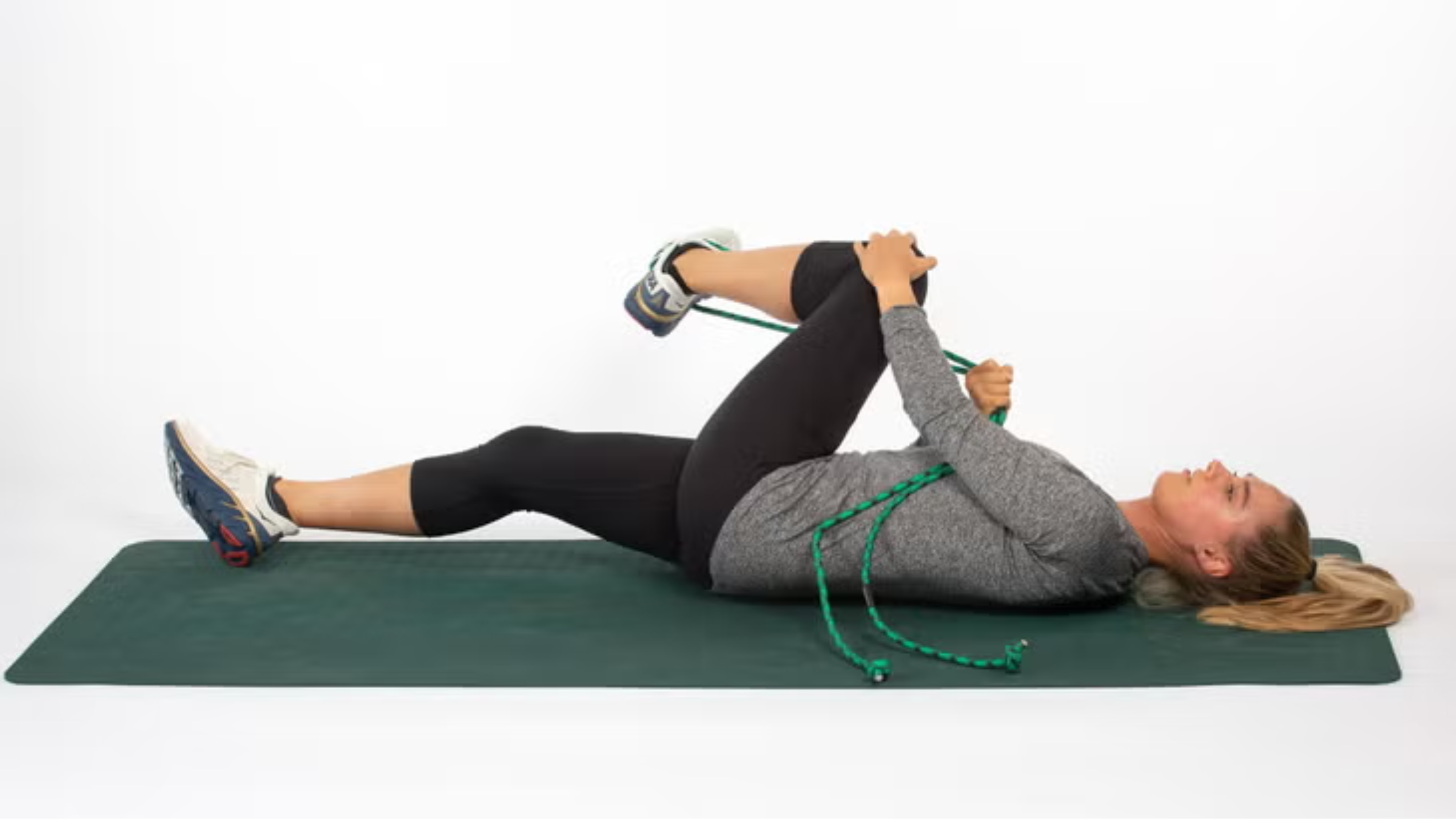
Muscles Stretched: Gluteus Medius/Minimus and Piriformis
(FYI: This move requires a band or rope.)
How to Do It:
- Lie on your back with your legs straight.
- Flex your left knee at a 90-degree angle and place the rope around the mid-foot, clasping the rope with the right hand.
- Use your left hand to stabilize your thigh by clasping the left knee.
- Contract your abdominals and hip adductors to lift your knee toward the opposite shoulder.
- Switch sides and repeat.
4. Long Adductor Stretch
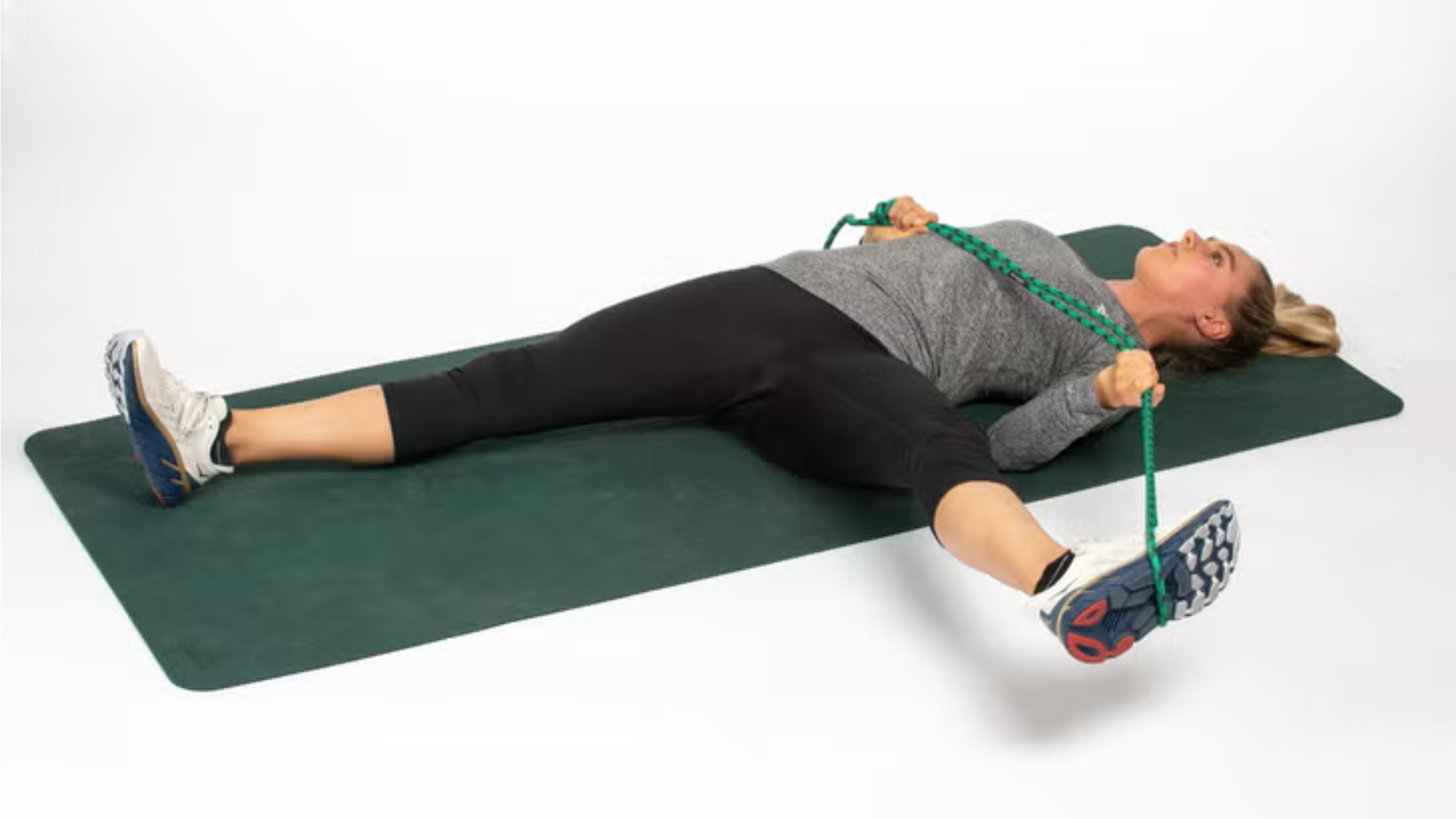
Muscles Stretched: Adductor Longus, Adductor Magnus, and Gracilis
(FYI: This move requires a band or rope.)
How to Do It:
- Lie on your back with your legs extended and wrap the rope around the arch of your left foot.
- Flex your right foot.
- Lift your left leg to the side by contracting your outer thigh and hip muscles.
- Pull your leg outward (gently) with help from your rope or band.
- Switch sides and repeat.
5. Quadricep Stretch
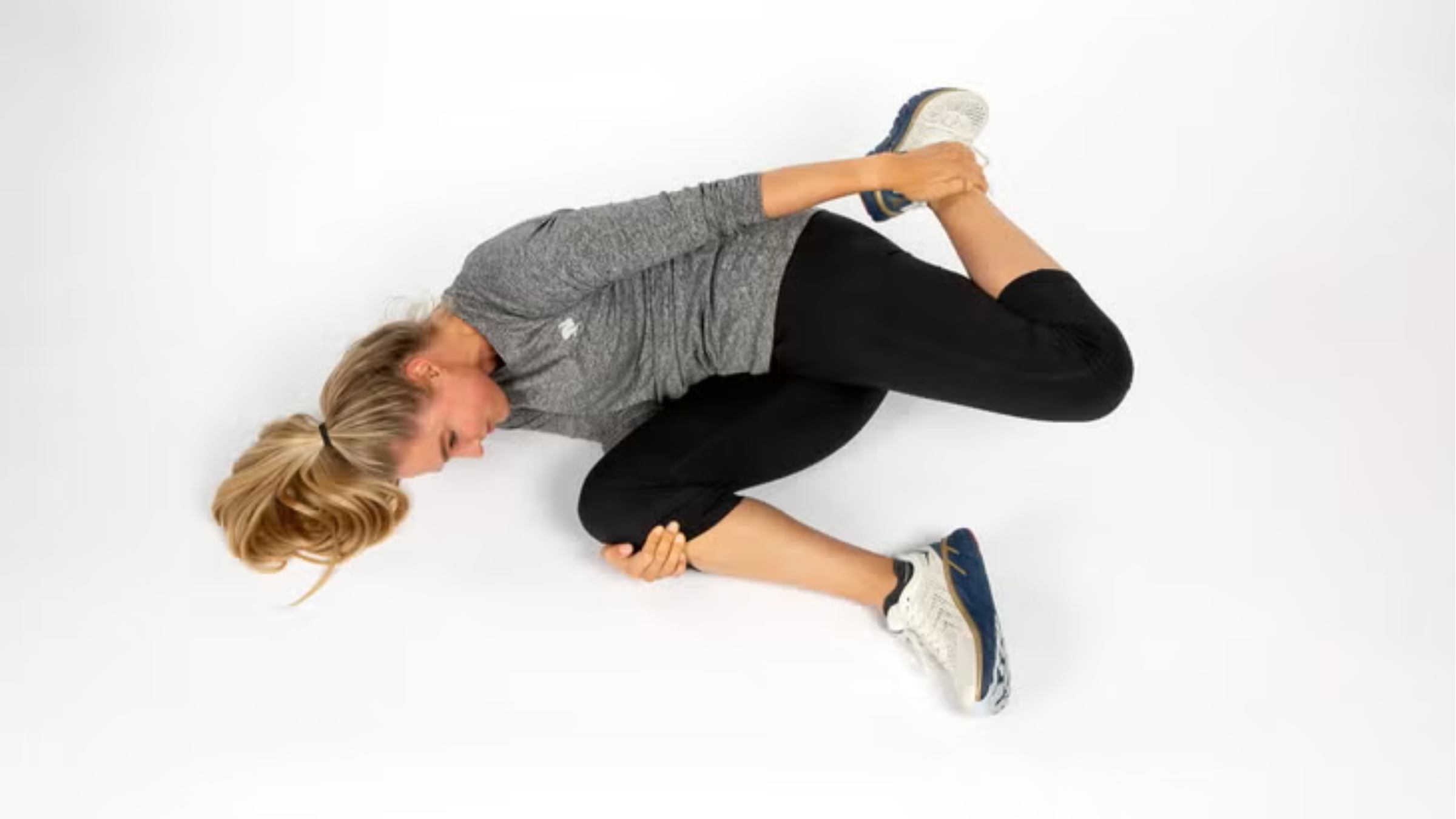
Muscles Stretched: Rectus Femoris
How to Do It:
- Lie on your right side and bring both of your knees to your chest.
- With your right hand, grasp the right knee from the outside.
- With your left hand, grasp the left ankle and extend the left thigh back by contracting the buttocks and hamstrings.
- Use your hand to draw your left heel close to your buttocks.
- Switch sides and repeat.
6. Hip Flexor Stretch

Muscles Stretched: Rectus Femoris and Psoas
How to Do It:
- Kneel down on your left knee, and place a pillow or cushion under it for comfort.
- Step your right foot forward so your right leg is bent.
- Keep your pelvis and back steady by tightening your abdominal muscles.
- As you move forward, squeeze your butt and hamstrings to try to bring your left heel toward your left buttock.
- If possible, use one or both hands to gently pull your heel closer to your buttock, stretching as far as your flexibility allows.
- Switch sides and repeat.
7. Short Adductor Stretch
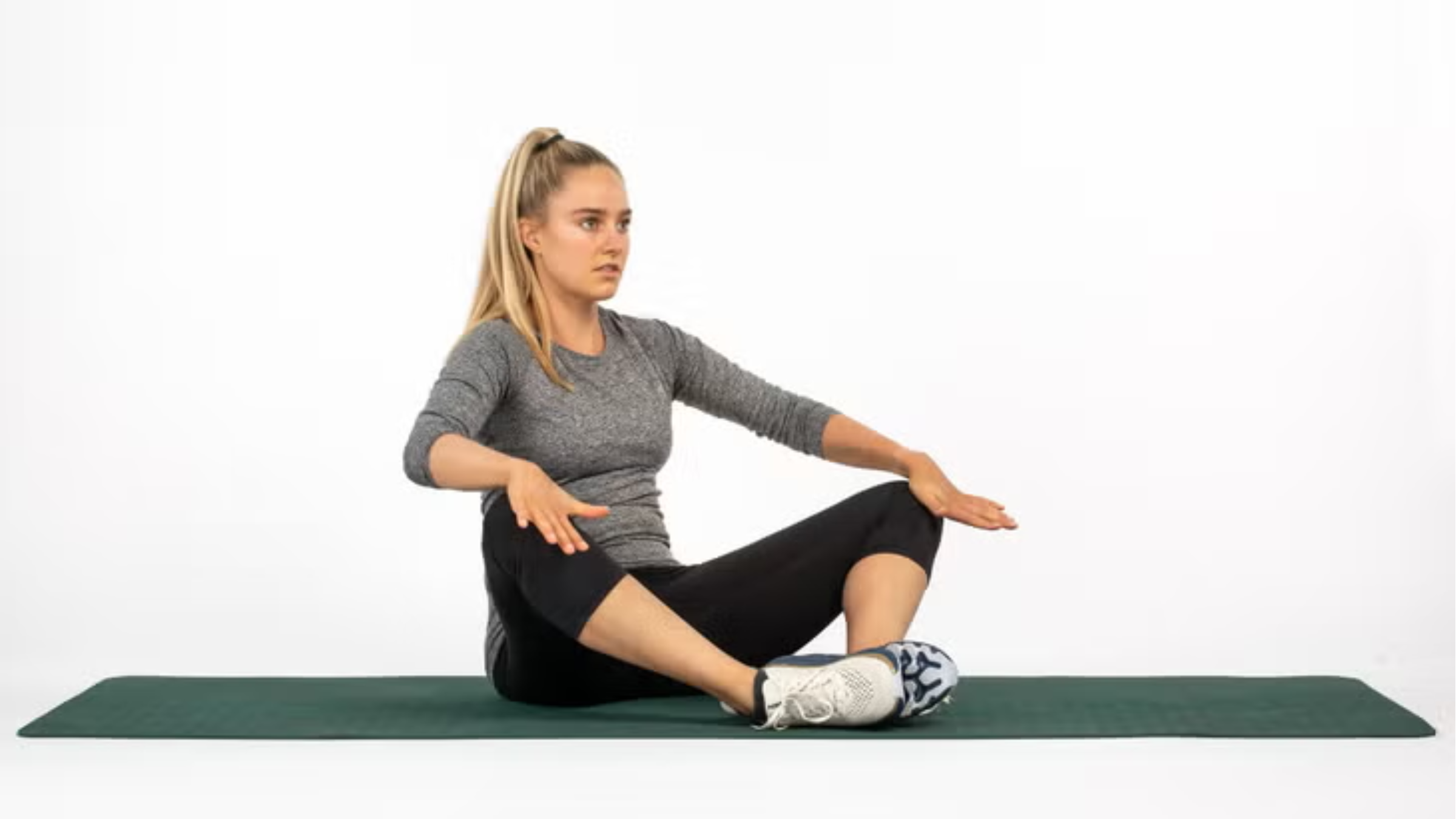
Muscles Stretched: Pectineus, Adductor Brevis, and Proximal Adductors
How to Do It:
- Sit with the soles of your feet pressed together.
- Spread your thighs as far apart as you can.
- Use your arms/hands to gently press down near your knees to help deepen the stretch.
8. Composite Upper Calf, Hamstrings-Neural Stretch

Muscles Stretched: Gastrocnemius and Hamstrings
(FYI: This move requires a band or rope.)
How to Do It:
- Sit with your legs fully extended and about six inches apart.
- Loop the rope around the ball of your left foot.
- Straighten the left leg and pull your toes toward you by contracting the shin muscles.
- For a deeper stretch, lean forward at the trunk and allow the foot to leave the floor when pulled.
- Switch sides and repeat.
9. Bent-Knee Calf Stretch

Muscles Stretched: Achilles Tendon and Soleus
How to Do It:
- Grab a chair or stand near a counter, desk, tree, or something similar.
- Stand on your right leg and bend the knee slightly.
- Place your left foot behind your right calf.
- Hold this stretch for 8 to 10 seconds, keeping your heel on the ground.
- Switch sides and repeat.
10. Straight-Leg Calf Stretch
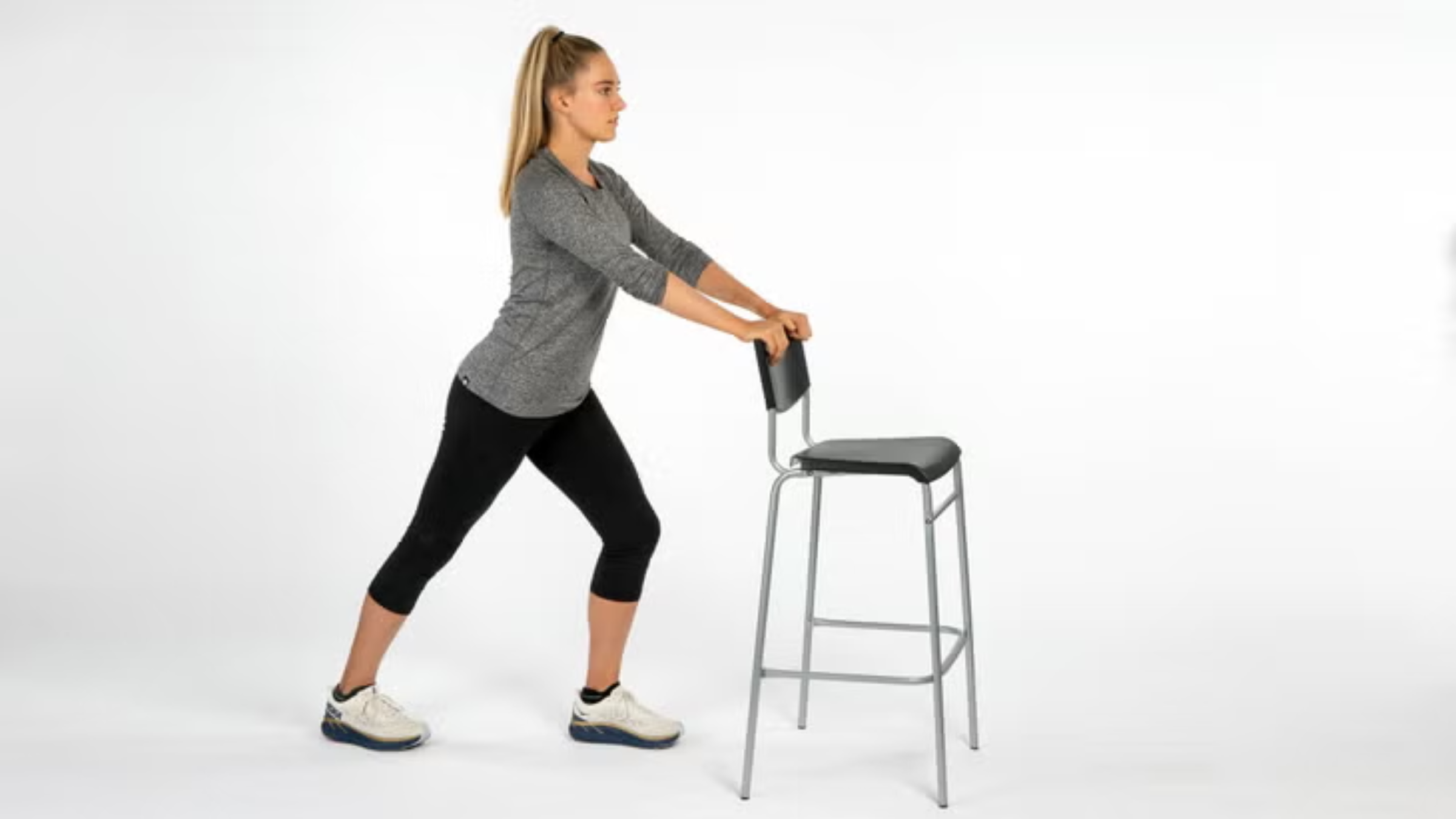
Muscles Stretched: Gastrocnemius
How to Do It:
- Grab a chair or stand near a counter, desk, tree, or something similar.
- Step forward with your left foot, keeping both legs straight.
- Press your right heel into the ground while keeping the leg straight.
- Lean forward slightly from your hips, keeping your back straight, until you feel a stretch in the back of your right calf.
- Switch sides and repeat.
These ten stretches first appeared in an article in Irish Runner magazine. Used with permission.
Want more Outside health stories? Sign up for the Bodywork newsletter. Ready to push yourself? Enter MapMyRun’s You vs. the Year 2025 running challenge.